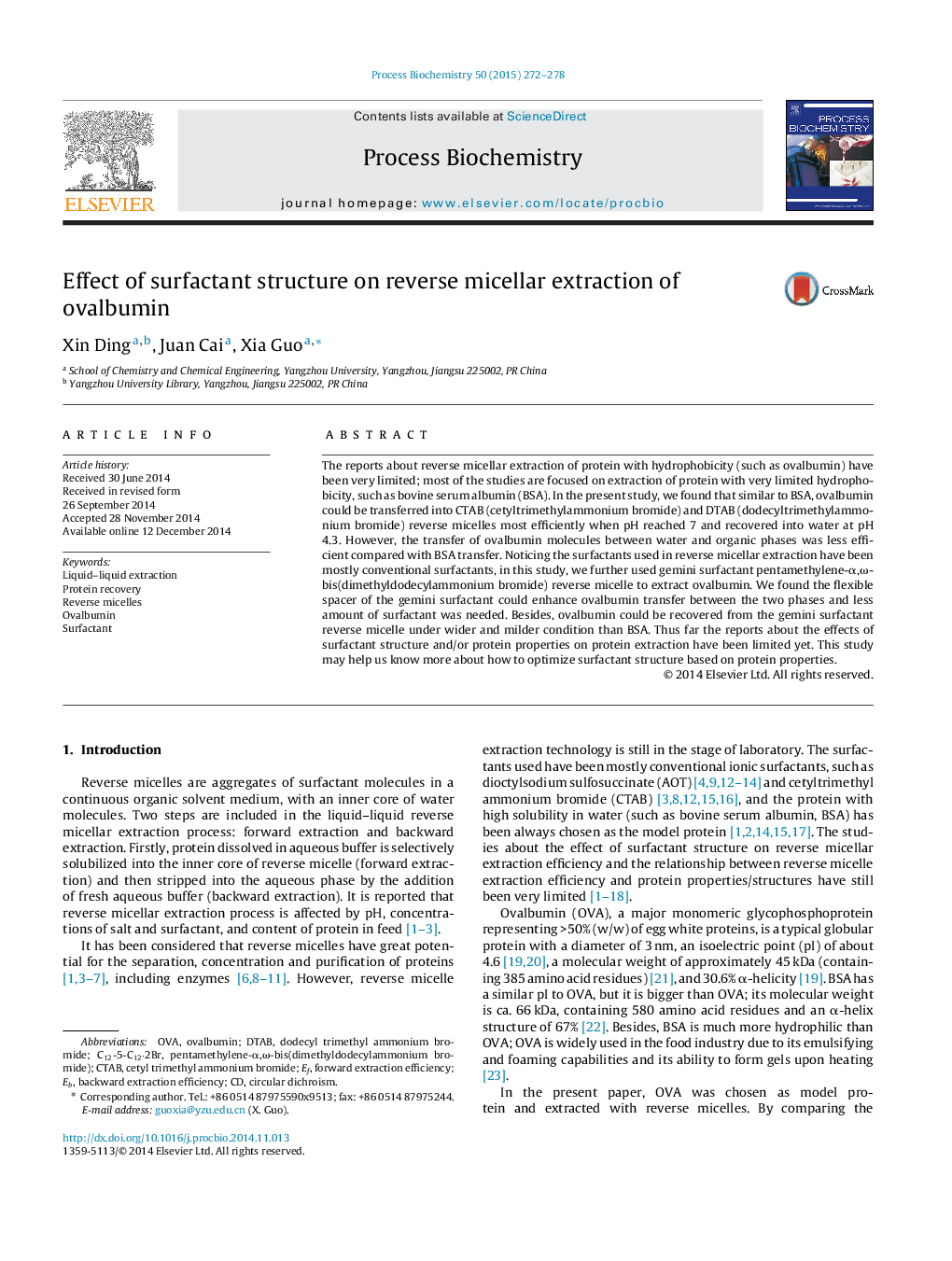| Article ID | Journal | Published Year | Pages | File Type |
|---|---|---|---|---|
| 34400 | Process Biochemistry | 2015 | 7 Pages |
•Ovalbumin, a protein with hydrophobicity, was extracted with reverse micelle.•Surfactant structure showed significant effect on ovalbumin extraction.•Reverse micelle showed different behaviors in extracting ovalbumin and BSA.•Ovalbumin could be recovered under wider and milder condition than BSA.
The reports about reverse micellar extraction of protein with hydrophobicity (such as ovalbumin) have been very limited; most of the studies are focused on extraction of protein with very limited hydrophobicity, such as bovine serum albumin (BSA). In the present study, we found that similar to BSA, ovalbumin could be transferred into CTAB (cetyltrimethylammonium bromide) and DTAB (dodecyltrimethylammonium bromide) reverse micelles most efficiently when pH reached 7 and recovered into water at pH 4.3. However, the transfer of ovalbumin molecules between water and organic phases was less efficient compared with BSA transfer. Noticing the surfactants used in reverse micellar extraction have been mostly conventional surfactants, in this study, we further used gemini surfactant pentamethylene-α,ω-bis(dimethyldodecylammonium bromide) reverse micelle to extract ovalbumin. We found the flexible spacer of the gemini surfactant could enhance ovalbumin transfer between the two phases and less amount of surfactant was needed. Besides, ovalbumin could be recovered from the gemini surfactant reverse micelle under wider and milder condition than BSA. Thus far the reports about the effects of surfactant structure and/or protein properties on protein extraction have been limited yet. This study may help us know more about how to optimize surfactant structure based on protein properties.
